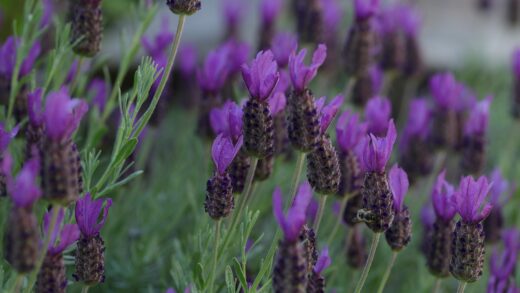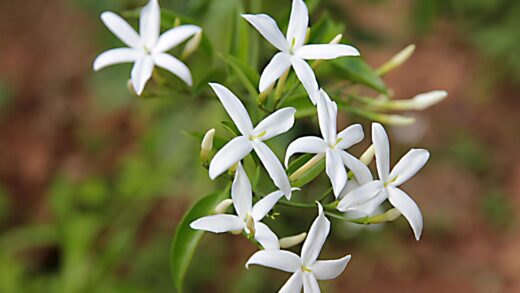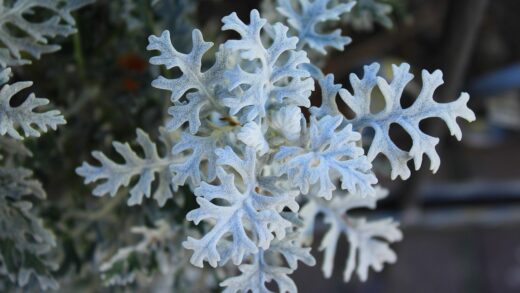While the everlasting pea is a remarkably self-sufficient and adaptable perennial, understanding its specific nutrient requirements and developing a sensible fertilization strategy can elevate its performance from merely adequate to truly spectacular. This plant has a unique advantage due to its classification as a legume, which significantly influences its need for supplemental feeding. A proper approach to fertilization focuses on supporting its natural processes rather than overwhelming it with excessive nutrients, which can often do more harm than good. Providing the right balance of minerals ensures robust growth, strong stems, and, most importantly, a profusion of vibrant, long-lasting flowers throughout the season.
The most significant aspect of the everlasting pea’s nutrient profile is its relationship with nitrogen. As a member of the Fabaceae (legume) family, it forms a symbiotic partnership with soil-dwelling bacteria called rhizobia. These bacteria colonize the plant’s roots, forming small nodules where they perform the remarkable task of nitrogen fixation. This process converts atmospheric nitrogen gas, which is unavailable to plants, into ammonia and other nitrogenous compounds that the plant can readily absorb and utilize. This natural, built-in fertilization system means that the everlasting pea rarely requires, and can even be harmed by, the addition of high-nitrogen fertilizers.
Given its ability to produce its own nitrogen, the plant’s primary needs from the soil are other essential macronutrients, particularly phosphorus and potassium. Phosphorus is vital for strong root development, energy transfer, and the process of flower and seed production. A sufficient supply of phosphorus is directly linked to the quantity and quality of blooms. Potassium plays a crucial role in the plant’s overall health and vigor, regulating water movement, activating enzymes, and enhancing its resistance to diseases and environmental stresses like drought and cold.
The ideal soil for an everlasting pea is one that is moderately fertile, well-drained, and has a pH that is neutral to slightly alkaline. Before planting, it can be highly beneficial to conduct a soil test to determine the existing nutrient levels and pH. If the soil is found to be acidic, it should be amended with garden lime to raise the pH to a more suitable level. If the test reveals specific deficiencies in phosphorus or potassium, targeted amendments can be made to create the perfect foundation for the plant from the very beginning.
In most average garden soils, the existing nutrient levels are often sufficient to support healthy growth without any supplemental feeding at all. The key is to avoid making assumptions and to observe the plant’s performance. A plant that is growing vigorously and flowering well is a clear indication that it is content with the nutrients available in the soil. Over-fertilization is a far more common problem than under-fertilization with this particular species, so a conservative approach is always the most prudent course of action.
More articles on this topic
The role of organic matter
The single most beneficial amendment you can provide for the everlasting pea is organic matter. Incorporating materials like well-rotted garden compost, leaf mold, or aged manure into the soil before planting provides a wealth of benefits that go far beyond simple nutrition. Organic matter improves the soil’s physical structure, creating better aeration and drainage in heavy clay soils, while simultaneously increasing the water and nutrient-holding capacity of light, sandy soils. This creates an optimal environment for root growth and the activity of beneficial soil microorganisms.
Beyond improving soil structure, the slow decomposition of organic matter provides a gentle, balanced, and continuous supply of essential nutrients. Unlike synthetic fertilizers that deliver a sudden, concentrated dose, compost releases nutrients gradually over time as it is broken down by soil life. This slow-release mechanism is perfectly suited to the needs of the everlasting pea, providing a steady stream of minerals like phosphorus, potassium, and various micronutrients without the risk of overwhelming the plant with excessive nitrogen.
An annual top-dressing of compost is an excellent way to maintain soil fertility and health throughout the life of the plant. In the spring, as new growth begins to emerge, apply a one- to two-inch layer of compost on the soil surface around the base of the plant, spreading it out over the root zone. This acts as both a slow-release fertilizer and a mulch, helping to conserve soil moisture and suppress weeds. The nutrients will be gradually washed down into the root zone by rain and irrigation throughout the season.
The presence of abundant organic matter also fosters a healthy soil food web, which is crucial for the rhizobia bacteria that fix nitrogen on the plant’s roots. A biologically active soil provides the perfect conditions for this symbiotic relationship to thrive, further enhancing the plant’s natural ability to nourish itself. In essence, by focusing on feeding the soil with organic matter, you are creating a self-sustaining system that supports the long-term health and vitality of your everlasting pea.
More articles on this topic
Choosing the right fertilizer
If you determine that your soil is particularly poor and that your everlasting pea would benefit from supplemental feeding, it is crucial to select the right type of fertilizer. The primary rule is to avoid any fertilizer that is high in nitrogen. High-nitrogen feeds, such as lawn fertilizers, will stimulate a profusion of lush, green, leafy growth at the expense of flowers. The plant will look vigorous, but it will produce very few, if any, blooms, defeating the main purpose of growing this ornamental vine.
Instead, opt for a fertilizer that is higher in phosphorus (P) and potassium (K) relative to its nitrogen (N) content. Look for products labeled as “bloom boosters” or tomato fertilizers, which are specifically formulated to encourage flowering and fruiting rather than foliage growth. The N-P-K ratio printed on the fertilizer package should show a lower first number and higher second and third numbers, for example, a 5-10-10 or a 2-8-4 formulation.
Organic sources of phosphorus and potassium are excellent choices as they tend to release their nutrients more slowly and support soil health. Bone meal is a fantastic organic source of phosphorus and calcium, which promotes strong root systems and vibrant flowers. Wood ash, from untreated wood, is a good source of potassium and can also help to raise the soil pH slightly, which is beneficial for the everlasting pea. These amendments can be gently worked into the soil around the plant in the spring.
The timing of fertilizer application is also important. If you choose to fertilize, a single application in the early spring as new growth commences is usually sufficient for the entire season. Applying a slow-release granular fertilizer at this time will provide a steady supply of nutrients to support the plant through its main growth and flowering period. Avoid fertilizing late in the summer or in the autumn, as this can encourage tender new growth that may be damaged by the first frosts.
Application techniques
When applying any type of fertilizer, it is important to do so correctly to ensure it is effective and to avoid damaging the plant. For granular fertilizers, always follow the application rates recommended on the product packaging, as applying too much can burn the plant’s roots. Sprinkle the measured amount of granules evenly on the soil surface around the base of the plant, extending out to the drip line (the edge of its foliage).
After spreading the granular fertilizer, it is beneficial to gently scratch it into the top inch or so of soil using a hand cultivator or rake. This helps to incorporate the product and ensures it makes good contact with the soil. Following the application, water the area thoroughly. Watering is a crucial step as it dissolves the granules and carries the nutrients down into the root zone where the plant can absorb them. It also prevents the concentrated fertilizer from sitting against the plant’s crown or surface roots, which could cause chemical burns.
If you are using organic amendments like bone meal or compost, the application method is similar. Spread the material over the soil surface around the plant in the spring. These amendments are generally less concentrated than synthetic fertilizers, so the risk of burning the plant is much lower. They can be gently worked into the soil or simply left on the surface to be incorporated naturally by earthworms and microbial activity, with rainfall and irrigation carrying the nutrients down to the roots.
For water-soluble fertilizers, which are mixed with water and applied as a liquid feed, the process is slightly different. These provide a more immediate nutrient boost, which can be useful for container-grown plants or for giving a quick lift to a plant that is showing signs of a deficiency. Mix the fertilizer according to the package directions and use the solution to drench the soil around the base of the plant. Avoid applying liquid feed to dry soil, as this can damage the roots; it is best to water the plant with plain water first, and then apply the fertilizer solution.
Recognizing nutrient deficiencies
Although the everlasting pea is generally not a heavy feeder, it is still possible for it to exhibit signs of nutrient deficiencies, especially when grown in very poor or depleted soil. Learning to recognize these visual cues can help you diagnose and address the problem effectively. A general lack of vigor, stunted growth, and pale or discolored leaves are all common indicators that the plant may be lacking essential minerals.
A phosphorus deficiency often manifests as slow or stunted growth and may cause the foliage to take on a dull, dark green or even purplish hue. More significantly, a lack of phosphorus will severely impact flowering, resulting in very few or no blooms at all. If your plant appears healthy but simply refuses to flower, a phosphorus deficiency is a likely culprit. An application of bone meal or a high-phosphorus fertilizer can help to correct this issue.
Potassium deficiency can also lead to poor growth and a weakened plant. The most characteristic symptom is a yellowing or browning of the leaf margins and tips, starting with the older, lower leaves. The plant may also have weak stems and a reduced resistance to disease. An application of a balanced fertilizer with adequate potassium, or an organic amendment like wood ash or kelp meal, can help to remedy the problem.
While a nitrogen deficiency is rare in this plant due to its nitrogen-fixing ability, it can occur in very sterile or poor soils where the necessary rhizobia bacteria are absent. The primary symptom is a uniform yellowing (chlorosis) of the leaves, starting with the oldest ones at the base of the plant, along with severely stunted growth. In this specific and uncommon case, a light application of a balanced fertilizer containing nitrogen would be warranted to restore the plant’s health.


















